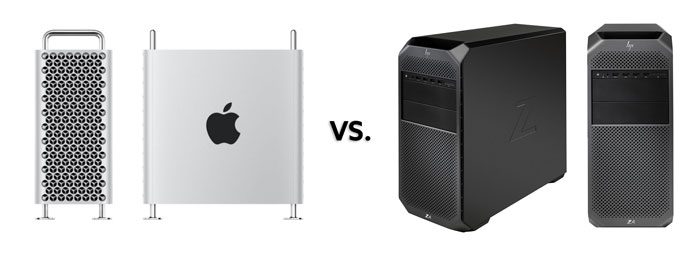
One of the biggest criticisms of the new Mac Pro is the $6,000 starting price that gets you an 8-core Xeon processor, 8GB Radeon Pro RX580X GPU, 32GB RAM, and a 256GB SSD. The sticker shock got me on the day it was announced and I’ve read countless comment and forum threads pointing out the fact that you can get a Windows workstation for half or even less that is comparable to the new Mac Pro.
However, I haven’t seen anyone point a link to a system in the $2000 to $3000 range that matches the new Mac Pro. So, let’s look at a big Windows workstation provider for creative pros and see how Apple’s Mac Pro matches up against a modern HP Z-series workstation.
Because we’re working off of the base specs to get to the $6,000 price tag, I’m going to try to match those as close as possible to an HP workstation. I realize that you could likely buy the components separately for a much lower price tag and build your own machine but that’s an entirely different market (and maybe a different post later on); however, I want to compare the pre-built configuration for a workstation product and avoid comparisons to gaming PCs as well. Essentially, let’s see what the alternative professional workstation looks like compared head-to-head against the Mac Pro.
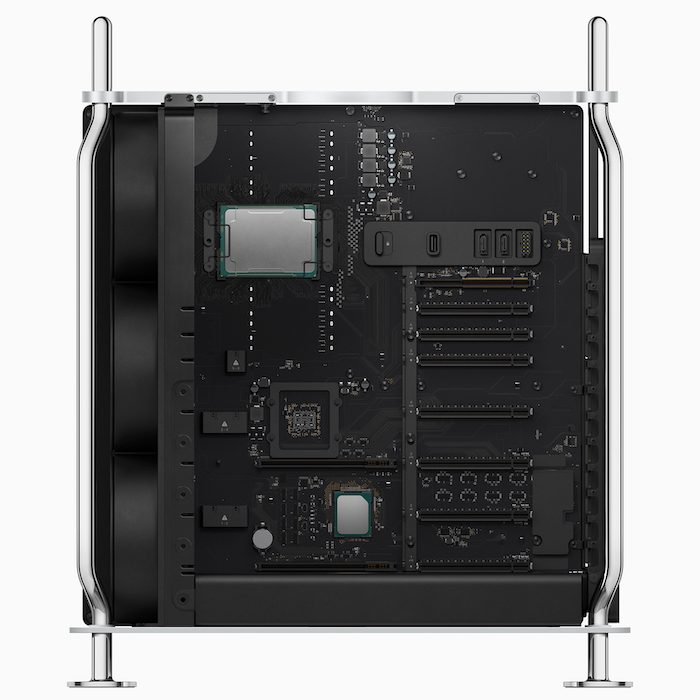
Intel Xeon W 8-Core Processor
The new Xeon W processors are hard to come by in an 8-core configuration for the HP Z series. However, one pre-built HP Z4 G4 Series Tower Workstation at B&H matches up quite nicely spec-wise and includes a 3.7 GHz Intel Xeon W-2145 8-core processor, which the processor alone runs nearly $1200. This processor is a step above what was found in the 2017 iMac Pro but still a step below the new 2019 Mac Pro. Notably, the L3 cache is 11MB in the Xeon W-2145, while the new Mac Pro’s Xeon W offers 16.5MB cache. So, the Mac Pro still edges the HP’s processor configuration out by a bit but we’re one generation off with relatively comparable processing power.
32GB DDR4 ECC RAM at 2666MHz
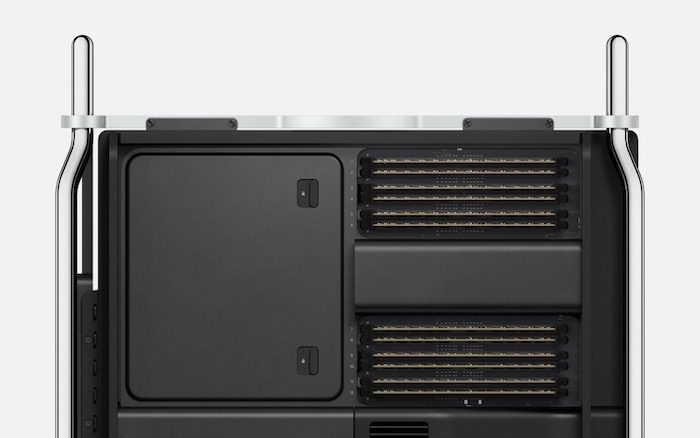
It’s common to see the more expensive ECC RAM in workstations and that’s the case for both the Mac Pro and HP’s Z4 workstations. The Mac Pro’s base specs call for 32GB DDR ECC RAM that operates at 2666MHz with the 8-core processor. Mac Pros with 12-core to 28-core processors operate memory at 2933MHz.
Again, the pre-built HP Z4 G4 Workstation we first mentioned above is configured with 32GB DDR4 ECC RAM at 2666MHz. Notably, the HP Z4 is expandable up to 256GB RAM, while the Apple Mac Pro is configurable with up to 1.5TB RAM. So, the base models are directly comparable here but the Mac Pro blows away the HP Z4 for future upgradeability. However, if you step up to the HP Z8 G4 product line, you can install up to 3TB of RAM across 20 slots.
Hard Drives
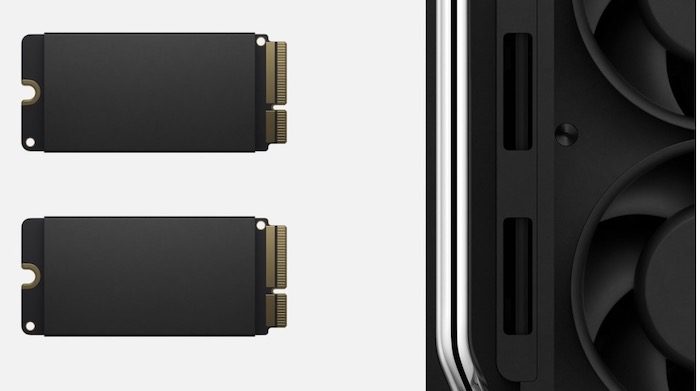
The base Mac Pro ships with a 256GB SSD and the HP Z4 we’ve been talking about includes a 512GB SSD. I don’t know the full specs of the HP’s SATA SSD drive but my guess is that it doesn’t match the Mac Pro’s drive, which looks to be an NVMe drive and is capable of up to 2.6GB/s sequential read and 2.7GB/s sequential write performance. From what I could find, HP’s standard SSD drive caps out around 600MB/s. However, I’m not certain that’s the included drive.
Based on the initial info, you can configure up to two 2TB drives in the Mac Pro for a max of 4TB onboard storage.
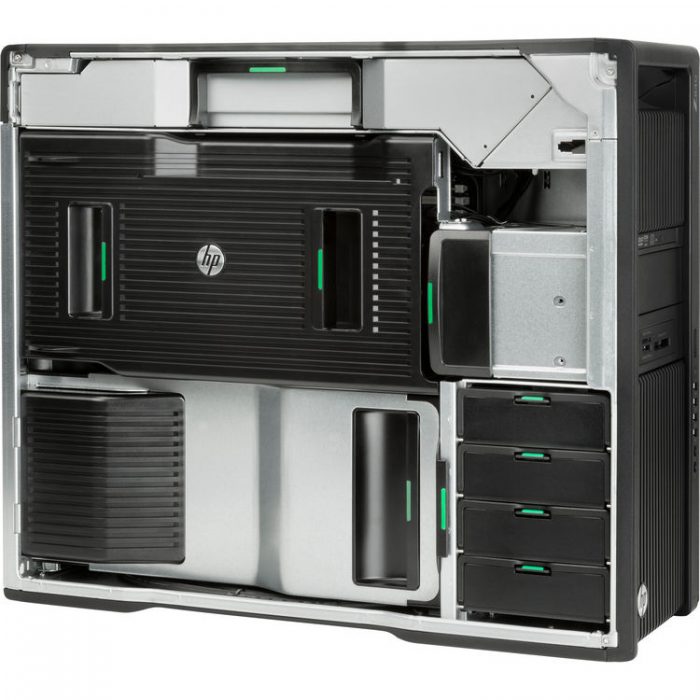
The HP Z4 can hold up to four 3.5″ drives (or 2.5″ drives) and has a pair of M.2 slots for fast and relatively affordable NVMe drives, which more than levels the playing field against the Mac Pro’s included storage. Of course, plenty of third-party manufacturers are frothing to sell their MPX Modules that include loads of storage in the new Mac Pro but that’s a little more expensive than dropping in an extra 3.5″ drive.
Graphics Cards
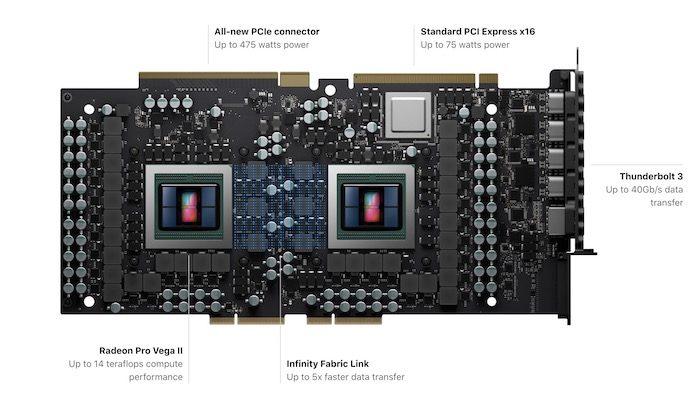
The Mac Pro base configuration includes a single AMD Radeon Pro 580X, which the nearest off-the-shelf match is a standard 8GB AMD RX 580 that retails for $200-$300 depending on the brand. The Radeon Pro 580X provides 36 compute units, 2304 stream processors and 8GB of GDDR5 memory.
Apple has been locked in with AMD for several generations now and is doubling down on their Metal graphics architecture in this next generation Mac Pro. NVIDIA appears unwilling to bend, which leaves us apparently stuck with AMD for the foreseeable future. Whether we will have GPU options beyond the Apple-configurable MPX Modules remains a mystery at this point.
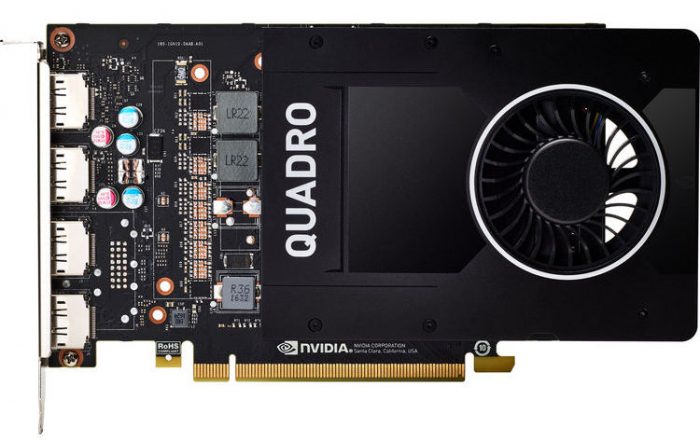
Our pre-built HP Z4 features an NVIDIA Quadro P2000 with 5 GB GDDR5 VRAM. The Quadro line is a purpose-built professional GPU for higher-end video editing and rendering. The P2000 runs between $400 and $500 off-the-shelf. It provides 3 teraflops single precision performance, compared to 5.2 teraflops from the Radeon 580X.
Running the cards through some online benchmark comparisons yield pretty similar results. Likely though, the Radeon Pro 580X is going to have a raw processing advantage over the Quadro P2000. The HP gives you a little more flexibility in upgrades though. You can pick just about any card you want to drop in and use the standard PCIe expansion slots along with standard PEG power from the HP’s power supply. As noted, we’re still in the dark with what that looks like in the Mac Pro.
Expandability and Upgradeability
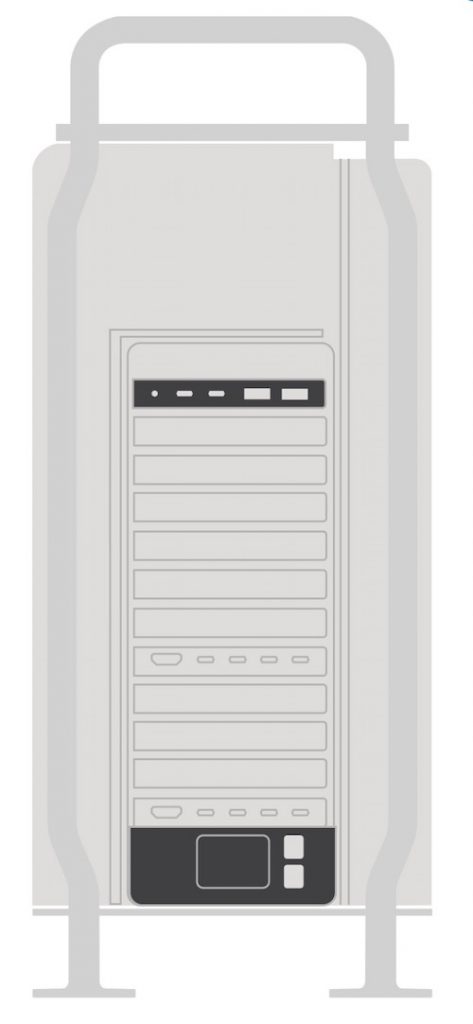
Picking up where we left off with graphics cards, let’s look at just how expandable these two machines are starting with the basic I/O.
The Mac Pro uses it’s only half-length PCIe card slot to include an I/O panel that gives us two USB 3.0, two Thunderbolt 3 and a headphone jack. Additionally, there are two Thunderbolt 3 ports on the top of the case and a pair of 10Gb ethernet ports on the back panel.
There are seven more full-length PCIe cards slots on the Mac Pro, three of which are single-wide and four are double-wide. The MPX Modules will cover two double-wide slots each.
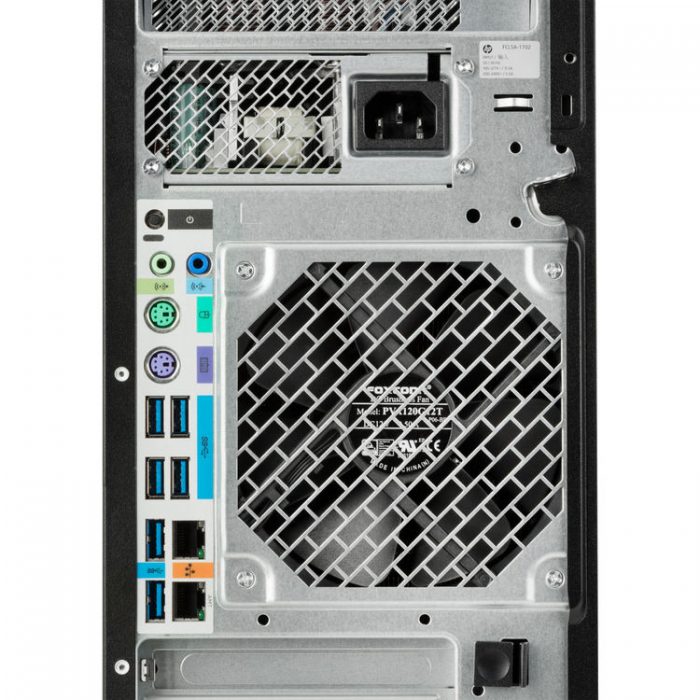
The chosen HP Z4 G4 features 10 USB 3.1 ports (four of which are on the front panel), two PS/2 ports, one 3.5mm audio input, one 3.5mm audio output, and one 3.5mm audio in/out (on the front panel). There are two 1Gb ethernet ports available. Additionally, there’s a DVD-R/W drive built-in. The Z4 has a total of seven PCIe slots: four x16, one x8, and two x4 slots.
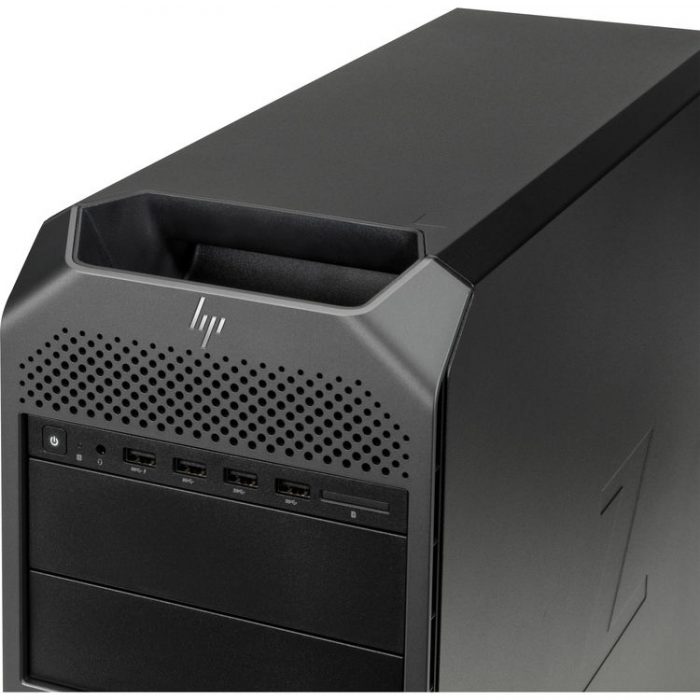
Unfortunately, we don’t know what we can and can’t do with the Mac Pro for upgrades just yet. What we do know is the HP will handle much more off-the-shelf upgrades from hard drives to video cards. Likely, the I/O card expansion options will be significantly broader than the Mac Pro. Of course, the Mac Pro will likely offer plenty of purpose-built upgrades from third-party vendors who work directly with Apple and this one machine to make everything work just right.
Price
So we’ve come all this way to see if the price of the Mac Pro is justified at $6000 for the base configuration we’ve compared to a specific and relatively even-matched HP Z4 G4 workstation.
If you cheated and clicked over to the link when I identified this specific model HP Z4 above, then you already know that it currently sells for $4199. Look closer at the price though…

It’s discounted by $2000 off the regular $6199 price, which would put us right in line with the 2019 Mac Pro.
The Intel Xeon W processors are tough to find on PC workstations. If you wanted to step down to Intel Xeon Silver, you can get 8-core or 10-core systems well under $4000. However, the specs aren’t going to match the Mac Pro. Even the Xeon W that we can configure in the HP system above doesn’t match the base Mac Pro processor.
You can also spend a lot more on an HP system. This HP Z8 G4 workstation with an 18-core Intel Xeon processor will set you back $23,749.
Pricing gets wild in workstation world. You are paying a professional price for a professional product.
Conclusion: Is It Worth It?

With the Mac Pro, you are getting what you pay for. Stacked up against the best Windows workstations, the $6000 asking price is appropriate for the equipment you are buying. With the 2019 Mac Pro, you are buying the premium components built around the Apple ecosystem, which we all know demands a premium of its own.
Personally, I don’t see an upgrade path for myself at this point that includes a new Mac Pro. I’m disappointed that I can’t buy a lower end machine in the sub-$3000 range and expand it over time. And I think that’s probably where a lot of the users that don’t fit in the high-end pro category have trouble understanding this release.
With the 2012 Mac Pro tower, you could drop $2499 for a base system that included a quad-core Xeon processor and 6GB RAM. Then, the 2013 Mac Pro trash can was introduced at $2999, which featured a quad-core Xeon process, 12GB RAM and dual AMD FirePro D300 GPUs. Now, there’s no way to buy into the Mac Pro ecosystem without dropping $6000 on a base machine. Couple this with the $5000 iMac Pro starting price and it becomes tough for the budget-minded creative pro to enter the Apple ecosystem.
With PC workstations, you can easily enter the realm for under $2000 grow from there as your budget allows.
What are your thoughts of the new Mac Pro compared to HP and other workstation PCs? Sound off in the comments below.


Apple should just upgrade the 2013 Mac Pro to 2019 specs and keep the $2,999 base price. The Mac Mini is worthless without a dedicated graphic chip and video ram. The new base Mac Pro for $5,999 is a joke with only a 256GB SSD, 32GB RAM and AMD WX 7100 GPU.
At OWC you can configure a old 2010-2012 Mac Pro with a 3.46 GHz 12 core Xeon, 64 GB RAM and Radeon HD 5870 for $2500.00
https://eshop.macsales.com/configure-my-mac/UAFEEK7CXXF4XXD
I believe Apple may be using the term “Cache” as L2 + L3 not just L3. I think this might change your analysis a little … https://en.wikichip.org/wiki/intel/xeon_w
Fair point. You may be right.
Whether or not you can configure a Windows PC to be identical in capability to the new Mac Pro at the same price today, Apple’s fashion-first enclosure will make it easy for any PC maker to undercut its price in a matter of months. I don’t understand the infatuation with machined aluminum cooling holes, Apple just doesn’t know when to restrain itself on useless stuff like that.
Apple indeed has a major gap in its desktop line that iMacs will never fill. It’s long past due that they gave us photography professionals an expandable mid-range tower and let us choose our own multi-monitor setups without having to resort to a pile of port adapters or external GPUs. Monitors that come with stands included, that is. I don’t need to edit 8K video but a Mini is absolutely inadequate from the GPU and port and future maintainability standpoint (just like the AIO iMacs, come to think of it).
I”m sorry to say this but this comparison is silly, as the author clearly lacks the insight into the workstation market and just went by spec sheets and web prices.
The new Mac Pro is an odd system in that it has the expandability usually found with dual processor workstation while being limited to a single CPU only. Consequently, it should be compared against a similarly expandable system, which in HP’s case would be the z8 G4. It’s available in single processor configuration with similar specs as the Mac Pro 2019, and has a vast range of expansion options.
As to pricing, it’s a bit silly to shop for workstation prices at online retailers. These machines are usually ordered to spec (CTO), and the pricing for those is notably lower than for the standard models they sell to the clueless over the web. Furthermore, HP has renewed workstations (HP RENEW), which look like new and come with the same warranty but are up to 40% cheaper than a “new” one. All while Apple prices are pretty much set in stone, i.e. there’s little way to get discounts even if you buy several systems.
Lastly, I’d recommended to replace the image of the z840 workstation in the section you go on about the z4’s storage and how you don’t even know if it’s SATA or NVME, because it’s just a reflection how little the author cared to fill his own and very obvious knowledge gaps in this area.
Disappointing.
When HP makes a machine that still has ps/2 ports you have to ask yourself – are they seriously being real here?
Comparing the Parts, specs and Price for the total System is Humbug. A Real comparison is taking a say, 30K or 50K worth of workstation and start editing high end video, 8K, 90 minutes, on it with premiere, avid and FCPX and then see how much time you need to get the same results.
If the Mac Pro does the work significantly faster it is the better system.
Do the same with for instance number crunching, big data analyses, etc.
It’s mute, the software dictates the hardware not the other way around. Most all scientific and high end VFX software use Nvidia cuda with the pro level Quadro GPU getting custom drivers specifically designed for individual professional softwares. Apple using AMD forfeited the pro market years ago. Most all software companies are NOT rewriting code for apples metal2 so until that happens – probably never because apples only 10% of market meaning this Mac Pro will be relegated to lower end photoshop or final cut editing just like the 2013 trash can disappointment was.
To bad Tim keeps screwing it all up.
This girl paid $20 for a PC that cost $5K that has specs much better than the base $6K Mac Pro.
https://youtu.be/5rwYjRzLHHI